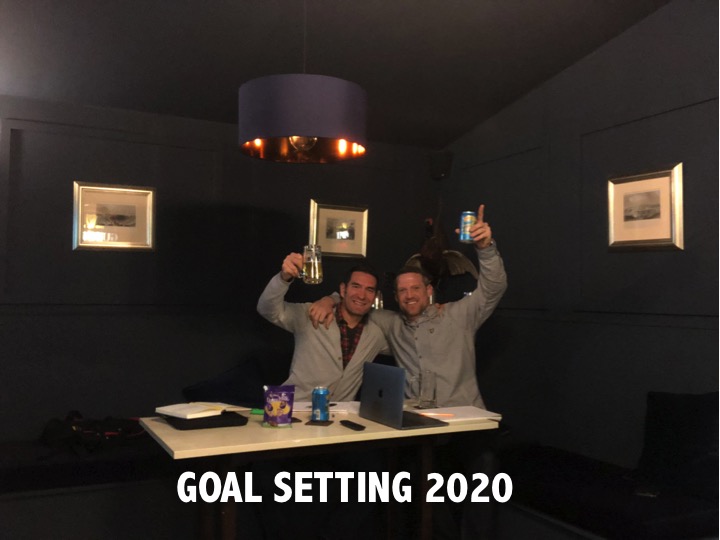This week’s activity has validated certain principles and practices that Chris and I have set and work to in our property property business. These are kind of unwritten rules that we have but have never formally articulated or shared until now. This is by no way an exhaustive list of how we operate but they are 3 principles/practices that we stick to, and because of that they have served us well in the last week.
Here are those 3 simple principles
- Keeping in touch with commercial surveyors
- The Importance of keeping records and notes on deal analysis
- Sticking to your investment principles
Hopefully principles like these will validate what you are already doing or help those still formulating their own. I’ll briefly unpack and explain each of these and why it has helped us this week.
SIMPLE PRINCIPLE #1: KEEPING IN TOUCH WITH SURVEYORS
Our January check ins with the surveyors we had developed relationships with last year led to us being notified about two properties we were interested in last year that are now back on the market. These were potential deals involving commercial property that we put a significant amount of due diligence into but neither came to fruition due 1) the vendors going cold 2) our offer on one property wasn’t accepted.
A phone call last week and a follow up coffee meeting this week with our friendly surveyor resulted in the news that both of these potential deals are now live again for us to have a second crack at the whip.
LESSON – keep in regular contact with the surveyor contacts you make and diarise check in calls/emails for time intervals that suit you. Build a relationship with these professionals and take them for coffees.
SIMPLE PRINCIPLE #2: KEEPING NOTES AND RECORDS ON DEAL ANALYSIS
Our ability to re-familiarise ourselves with these two property opportunities was pretty quick because we keep all of our deal analysis and associated notes in excel sheets in our shared google drive.
Whilst it is not a sophisticated CRM, we have all of our calculations, area comparables and summary notes from conversations with surveyors, agents etc all captured in those excel sheets filed in the google drive under the appropriate label so we can easily find it. This has meant getting our heads back into past due diligence has been swift and as it was 6-10 months ago we can now build on our area diligence easily and add a few lines for more recent comparables etc.
LESSON- whether you capture your deal analysis in paper form or in a google drive like us, the key is to file and keep it as you never know when it might need to be revisited. We see it as adding to the library of your intellectual property. Over time you will build up local market intelligence based on the analysis you do, comparables you find and the conversations you have. It will mean you are not starting again from scratch every time you go to analyse a deal of the same type or in the same area.
SIMPLE PRINCIPLE #3: STICKING TO YOUR INVESTMENT PRINCIPLES
Mistakes and successes over time in the property game has led us to evolve and create an approach to investing that we now apply across every property consideration. The investment philosophy we live by is our D.I.C.E model which I explain in detail in my book Predictable Property Profits.
One of the strategies that Chris and I have been building the foundations on around this D.I.C.E model is the very attractive targeted commercial investment. In simple terms that would look something like this – Find a commercial tenant with a need to expand into a new location and ascertain their property requirements; go hunting for a vacant property that will provide the end result that the tenant wants; gain some commitment from them ie an agreement to lease; acquire the vacant building, do the required refurb works, get the tenant in place, refinance at the higher commercial valuation; move onto the next deal.
We love this approach in the commercial space because it ticks all of our boxes. In particular it removes a lot of the guesswork and bakes a high degree of certainty into the deal, something that is paramount to us, especially when working with JV investors.
Circling back why this principle served us this week – there was a detached shop with uppers building for sale that was brought to our attention last Spring. The attractive thing about this was that even though geographically far from us, there was interest from a major charity to let it. We chipped away at this for several weeks to try and line up a mutually beneficial deal for all parties but in the end weren’t able to bring it to a conclusion.
In our catch up with our surveyor this week, we were informed that the building was back up for sale, but now going to auction with a pretty low guide price. Naturally Chris and I were pleasantly surprised and picked up our diligence where we left off to try and structure the deal. First port of call was the commercial agent representing the charity, and whilst that very helpful call provided an answer it wasn’t necessarily the answer we wanted to hear – the premises was no longer on the radar and there certainly wouldn’t be a conversation about an agreement for lease in the near future.
LESSON- Even though this property could be picked up cheap [potentially around £50K for over 3000 SQFT of high St property] without the certainty of end user it no longer qualified to fit our model. We were not about to speculatively have a gamble with a property far from our home area just because it was cheap.
In a previous stage of our property journey that decision to move on would have been way more difficult, but now with a clear set of guiding principles on how we invest, it made the decision clear, logical and swift.
In the week ahead we are focusing on bottoming out the other opportunity that is live again.
What are some of your guiding principles and practices that continue to serve you in your property business?




